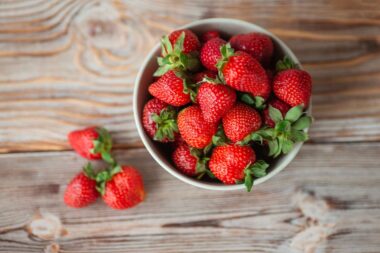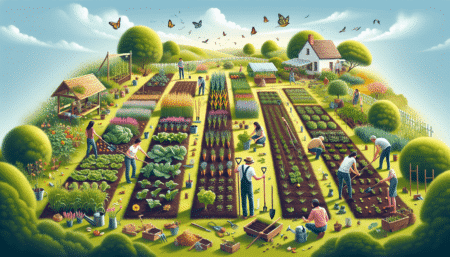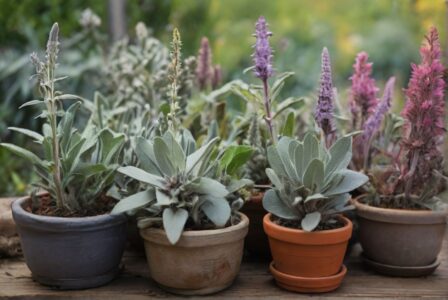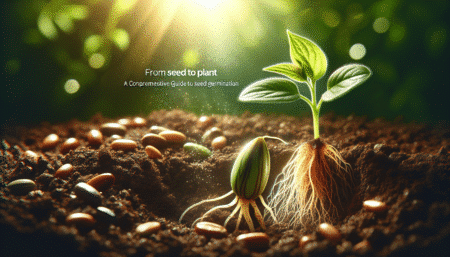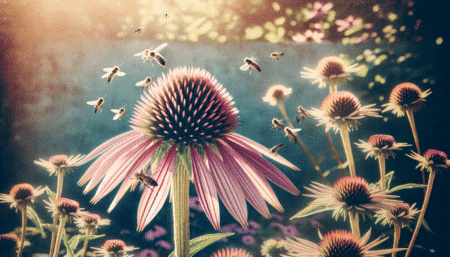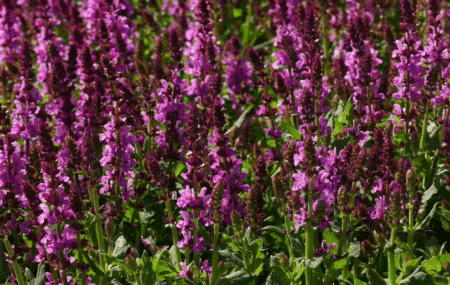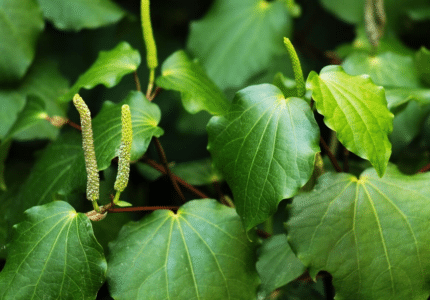- What you should know about strawberries
- The right choice of location for your strawberry plants
- Preparing the soil for planting strawberries
- The different varieties of strawberry plants and their characteristics
- Planting the strawberry seedlings in your garden
- Care and watering of strawberry plants during growth
- Protect your strawberries from pests and diseases
- Harvest time: When are the berries ripe for picking?
- Tips for storing harvested strawberries
- Conclusion: Your own fresh, delicious and healthy organic strawberries
Here you can find our selection of strawberry seeds!
Growing strawberries
What you should know about strawberries: Want to grow your own fresh, tasty and healthy strawberries? In this blog article, you will learn everything you need to know to successfully grow strawberries. From choosing the right location and preparing the soil to caring for and harvesting them - here you will find all the important information you need to enjoy your own organic strawberries.
1. what you should know about strawberries
If you have decided to grow strawberries in your garden, there are a few things to bear in mind. Strawberries are not only delicious and healthy, but also relatively easy to grow. However, before you start growing them, there are a few things you should know about strawberries. For example, strawberries are not fruits in the true sense of the word, but rather aggregate fruits. This means that the small seeds on the surface of the berry are actually the actual fruit. You should also know that there are different varieties of strawberry plants and that each has its own characteristics. It is therefore best to find out in advance which variety is best suited to you and what requirements it has. With this knowledge, you'll be well equipped to grow your own fresh strawberries!
2. the right choice of location for your strawberry plants
One of the most important things when planting strawberries is choosing the right location. Choose a sunny spot where the plants receive at least six hours of direct sunlight per day. Avoid shady or damp areas as this increases the risk of fungal attack. The soil should be well-drained and not waterlogged. Make sure that the pH of the soil is between 5.5 and 6.5 to create optimal conditions for your strawberries to grow. If you live in an area with heavy clay soil, you can loosen the soil with compost or sand before planting. Good drainage is particularly important when choosing a location for your strawberry plants - there's nothing worse than overwatered berries!
3. preparing the soil for planting strawberries
Before you start planting strawberries, you should prepare the soil. It is important that the soil is deep and loose so that the roots of the plants can develop well. Sufficient drainage is also important to avoid waterlogging. A good way to do this is to add sand or gravel to the soil. In addition, the soil should be enriched with compost or fertilizer to ensure the plants are supplied with nutrients. The best time to prepare the soil is in the fall before planting in the spring. However, if you wait until later, you can still prepare the soil in spring and plant immediately afterwards. Note, however, that you must wait at least four weeks before you start planting so that the fertilizer can settle. By carefully preparing the soil, your strawberry cultivation will be successful and you will soon be able to harvest fresh strawberries!
4. the different varieties of strawberry plants and their characteristics
One of the most important decisions when growing strawberries is choosing the right variety. There are many different types of strawberry plants, each with their own special characteristics. Some varieties ripen particularly early and are therefore ideal for growing in colder regions or in areas with short growing seasons. Other varieties produce larger fruits, while still other plants are more resistant to pests and diseases. It is therefore important to think in advance about the type of strawberries you want to grow and the needs of these plants. Popular strawberry varieties include 'Honeoye', 'Korona' and 'Elsanta'. Each of these varieties has its own advantages and disadvantages, so it makes sense to find out about each one in detail and weigh up which one is best suited to the planned location.
5. planting the strawberry seedlings in your garden
Now that you have found the perfect location for your strawberry plants and prepared the soil, you can finally start planting the seedlings. Choose a day when it is not too hot or too sunny, as the young plants can be sensitive to direct sunlight. Dig a hole about 10-15 cm deep and carefully place the seedling in it so that it stands upright and is not bent. Cover the roots with soil and press them down lightly. Make sure that the top of the root ball is just below the surface and then water generously. To allow the strawberry plants to develop optimally, make sure you leave enough space between them - this is usually around 25-30 cm. If you plant several rows, they should be at least 50-60 cm apart. It is also important to know that strawberries usually only remain productive for two to three years. So make sure to plant new seedlings every year or propagate the existing plants by cuttings. Once your strawberry plants are planted, it is important to water them regularly - especially during dry periods in summer. However, avoid waterlogging the soil by allowing excess water to run off and keeping the soil between the plants loose. With these tips, you are now well prepared to grow your own strawberries. Good luck with that!
6. care and watering of strawberry plants during growth
As they grow, strawberry plants need regular care and watering to stay healthy and produce a good harvest. A sufficient amount of water is essential for the berries to develop, but it is important to ensure that the plants are not overwatered. A well-drained soil and a layer of mulch can help to distribute water evenly and contain weed growth. During care, dead leaves or fruit should be removed regularly to prevent mold or fungal infestation. The plants should also be fertilized regularly to promote healthy growth. Either organic or artificial fertilizers can be used - depending on personal preference and environmental compatibility. With the right care and watering, even beginners can achieve a successful strawberry harvest and enjoy fresh berries straight from their own garden.
7. protect your strawberries from pests and diseases
In the last section, we looked at planting strawberry seedlings and caring for and watering your strawberry plants. But what if pests and diseases threaten your crop? There are some important steps you can take to protect your strawberries from these threats. First of all, you should make sure that your plants are planted in a sunny location. The more sun they get, the more resistant they are to pests and diseases. Good ventilation is also important to minimize the risk of fungal infestation. Another important factor is the soil quality. It is advisable to regularly loosen the soil and remove weeds. If you use organic fertilizer such as compost or manure, you should make sure that it is well rotted and does not contain weed seeds. You can use various natural methods to repel pests. For example, planting marigolds or nasturtiums between the strawberry plants helps to keep aphids away. Laying copper tape around the stem of your plants can also help to keep slugs away. In the case of diseases such as mildew or gray mold, you need to act quickly: Remove affected leaves immediately and dispose of them in the trash (not the compost). You can also make a natural fungicide from garlic and water and spray the plants with it. If you follow these tips, you can successfully protect your strawberries from pests and diseases and enjoy a healthy harvest.
8 Harvest time: When are the berries ripe for picking?
One of the most important questions you should ask yourself when it comes to growing strawberries is: When are the berries ripe for picking? The harvest time varies depending on the variety and location. In general, however, you can expect your strawberries to be ripe between mid-May and July. Make sure that the berries are completely red in color and have a shiny surface. If you gently pull on a berry and it comes away easily, it is ready to pick. It's important not to wait too long, as overripe fruit can spoil quickly and attract pests. To make sure you don't pick unripe or overripe berries, visit your garden regularly to monitor ripening. If possible, pick your strawberries in the morning or evening when temperatures are cooler and keep them in the fridge until ready to use or store.
9. tips for storing the harvested strawberries
If you have successfully grown strawberries, it is now time to harvest the ripe fruit and store it properly. After all, who wouldn't want to snack on the sweet berries for a long time to come? It's best to pick the strawberries early in the morning or late in the evening when it's cooler. This way they keep longer and retain their flavor. When picking, you should make sure that the fruit is fully ripe and has no bruises. After picking, you should process or store the strawberries as quickly as possible. If you don't want to eat them straight away, you can store them in the fridge for a few days. The best way to do this is to place the berries in a shallow dish or plate and cover with cling film. Another option is to freeze the strawberries. To do this, you must first wash and clean them and remove any stalks. Then place them on a baking tray and put it in the freezer for about two hours. You can then store the frozen strawberries in a sealable container in the freezer. If you want to enjoy your home-grown strawberries for as long as possible, you should also make sure that they stay dry and are not compressed during storage. This will keep them fresh and tasty!
10.conclusion: Your own fresh, delicious and healthy organic strawberries
After all the work and patience you've put into planting and caring for your strawberry plants, the time has finally come: your own fresh, delicious and healthy organic strawberries are ready to be picked! The taste of home-grown strawberries is incomparable to those from the supermarket. You know that they have been grown without pesticides or other chemicals and are therefore full of nutrients. There's nothing better than snacking on these little red fruits straight from the bush - a treat for all the senses. If you have planted several seedlings, you can look forward to a rich harvest season and treat your friends and family to these delicious berries. Another advantage of growing your own is the possibility of preserving them by freezing or canning them to bring the taste of summer to the table even in winter. All in all, the effort of growing strawberries is definitely worth it - not only for your taste buds, but also for the knowledge of how our food gets from seed to harvest.
Note: The information in this article is for informational purposes only and is not intended to replace the advice of a physician or other healthcare professional. Always consult a doctor before using any new herbs or supplements. Furthermore, you should always check whether certain plants are permitted in your country before growing them.

